(3,3,3-TRIFLUOROPROPYL)TRIMETHOXYSILANE
Synonym(s):3,3,3-Trifluoropropyl-trimethoxysilane
- CAS NO.:429-60-7
- Empirical Formula: C6H13F3O3Si
- Molecular Weight: 218.25
- MDL number: MFCD00039266
- EINECS: 207-059-3
- SAFETY DATA SHEET (SDS)
- Update Date: 2024-12-18 14:15:32
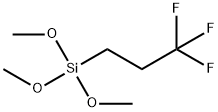
What is (3,3,3-TRIFLUOROPROPYL)TRIMETHOXYSILANE?
Chemical properties
Colorless clear liquid
The Uses of (3,3,3-TRIFLUOROPROPYL)TRIMETHOXYSILANE
(3,3,3-Trifluoropropyl)trimethoxysilane is used in the manufacture of defoaming agents, releasing agents, fluoro silicone resin and coating. It is used as a coupling agent for epoxy resin.
The Uses of (3,3,3-TRIFLUOROPROPYL)TRIMETHOXYSILANE
Trimethoxy(3,3,3-trifluoropropyl)silane is commonly used in the synthesis of a variety of silsesquioxane based polymers. It is a precursor in the synthesis of macroporous gels for separation of oil and water. It can also be used in the synthesis of hydrophobic silica aerogel for the removal of uranium from aqueous solutions.
Properties of (3,3,3-TRIFLUOROPROPYL)TRIMETHOXYSILANE
| Boiling point: | 144 °C(lit.) |
| Density | 1.142 g/mL at 20 °C(lit.) |
| vapor pressure | 12hPa at 25℃ |
| refractive index | n |
| Flash point: | 38°C |
| form | liquid |
| color | Colorless to Almost colorless |
| Specific Gravity | 1.137 |
| Sensitive | Moisture Sensitive |
| Hydrolytic Sensitivity | 7: reacts slowly with moisture/water |
| BRN | 1762962 |
| CAS DataBase Reference | 429-60-7(CAS DataBase Reference) |
| EPA Substance Registry System | Silane, trimethoxy(3,3,3-trifluoropropyl)- (429-60-7) |
Safety information for (3,3,3-TRIFLUOROPROPYL)TRIMETHOXYSILANE
| Signal word | Warning |
| Pictogram(s) |
 Flame Flammables GHS02  Exclamation Mark Irritant GHS07 |
| GHS Hazard Statements |
H226:Flammable liquids H315:Skin corrosion/irritation H319:Serious eye damage/eye irritation H335:Specific target organ toxicity, single exposure;Respiratory tract irritation |
| Precautionary Statement Codes |
P210:Keep away from heat/sparks/open flames/hot surfaces. — No smoking. P302+P352:IF ON SKIN: wash with plenty of soap and water. P305+P351+P338:IF IN EYES: Rinse cautiously with water for several minutes. Remove contact lenses, if present and easy to do. Continuerinsing. |
Computed Descriptors for (3,3,3-TRIFLUOROPROPYL)TRIMETHOXYSILANE
| InChIKey | JLGNHOJUQFHYEZ-UHFFFAOYSA-N |
New Products
Tert-butyl bis(2-chloroethyl)carbamate (S)-3-Aminobutanenitrile hydrochloride N-Boc-D-alaninol N-BOC-D/L-ALANINOL N-octanoyl benzotriazole 3,4-Dibenzyloxybenzaldehyde 4-Hydrazinobenzoic acid 1,1’-CARBONYLDIIMIDAZOLE R-2-BENZYLOXY PROPIONIC ACID 3-NITRO-2-METHYL ANILINE 4-IODO BENZOIC ACID 4-HYDROXY BENZYL ALCOHOL 4-(3-chloropropyl)morpholine phenylhydrazine hydrochloride (2-Hydroxyphenyl)acetonitrile 4-Bromopyrazole 5-BROMO-2CYANO PYRIDINE 5,6-Dimethoxyindanone 5-broMo-2-chloro-N-cyclopentylpyriMidin-4-aMine 4-methoxy-3,5-dinitropyridine 2-(Cyanocyclohexyl)acetic acid 2-aminopropyl benzoate hydrochloride 1-(4-(aminomethyl)benzyl)urea hydrochloride tert-butyl 4- (ureidomethyl)benzylcarbamateRelated products of tetrahydrofuran
![1,3,5-Tris[(3,3,3-trifluoropropyl)methyl]cyclotrisiloxane](https://img.chemicalbook.in/CAS/GIF/2374-14-3.gif)

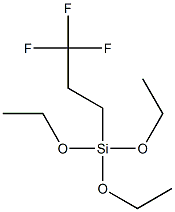

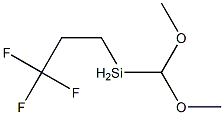
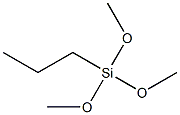

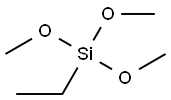
You may like
-
 (3,3,3-Trifluoropropyl)trimethoxysilane CAS 429-60-7View Details
(3,3,3-Trifluoropropyl)trimethoxysilane CAS 429-60-7View Details
429-60-7 -
 Trimethoxy(3,3,3-trifluoropropyl)silane, 97% CAS 429-60-7View Details
Trimethoxy(3,3,3-trifluoropropyl)silane, 97% CAS 429-60-7View Details
429-60-7 -
 Trimethoxy(3,3,3-trifluoropropyl)silane CAS 429-60-7View Details
Trimethoxy(3,3,3-trifluoropropyl)silane CAS 429-60-7View Details
429-60-7 -
 Trimethoxy(3,3,3-trifluoropropyl)silane CAS 429-60-7View Details
Trimethoxy(3,3,3-trifluoropropyl)silane CAS 429-60-7View Details
429-60-7 -
 13057-17-5 95.0%View Details
13057-17-5 95.0%View Details
13057-17-5 -
 4-bromoaniline 106-40-1 99.0%View Details
4-bromoaniline 106-40-1 99.0%View Details
106-40-1 -
 5-bromo-2-chlorobenzoic acid 99.0%View Details
5-bromo-2-chlorobenzoic acid 99.0%View Details
21739-92-4 -
 15761-38-3 97.0%View Details
15761-38-3 97.0%View Details
15761-38-3
Statement: All products displayed on this website are only used for non medical purposes such as industrial applications or scientific research, and cannot be used for clinical diagnosis or treatment of humans or animals. They are not medicinal or edible.